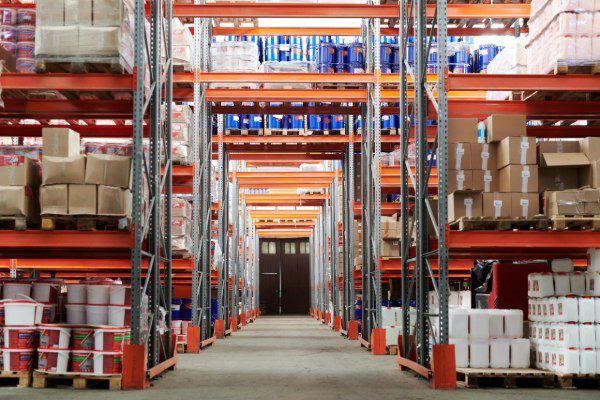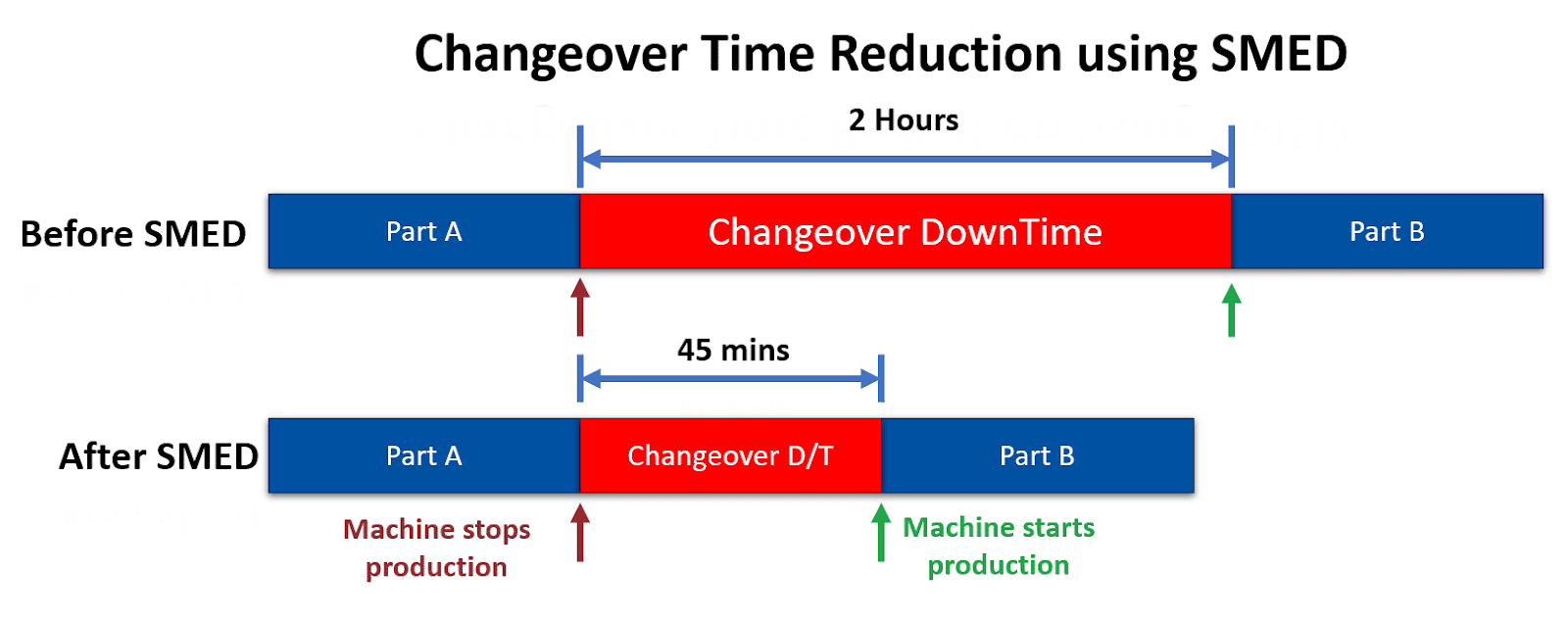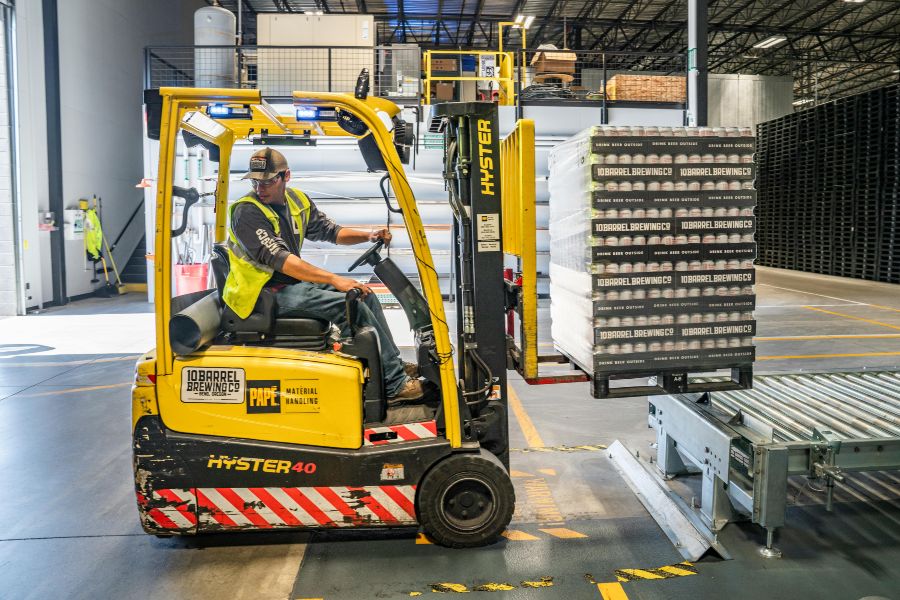Inventory management has a big impact on the costs of running a business. When it comes to inventory management decision-making, the order quantity and order frequency are both important considerations. Master the essential of Inventory Management with my introductory video training course, here on Rowtons Training.
So, is it more cost-effective to order a large amount of inventory occasionally, or a small amount more regularly? In this article we discuss the main considerations leading to the balancing act of inventory levels with inventory costs.
For more information you can watch my training video here on YouTube: ‘How Much Inventory Should You Buy / Hold?’.
Order Frequency and Order Quantity
We can consider this concept of inventory management with an example of grocery shopping, in particular, let’s consider your home shopping for… frozen vegetables…. We must choose how often we buy frozen vegetables, our ‘order frequency’, and how many bags of frozen vegetables we buy each time, our ‘order quantity’.
In the context of home grocery shopping, the varying costs many not seem that different. However, when extrapolated to a larger scale of a big company, such inventory management decisions can be the difference between causing, or saving thousands, or even millions of dollars in costs. In addition to this, inventory must be managed effectively to prevent businesses from running out of stock.
There are many factors affecting the quantity of stored inventory of a particular item:
- Order quantity
- Order frequency
- Safety stock
- Consumption rate
- Time elapsed since last delivery
- Forecasted demand
The essential objectives of inventory management are to:
- Have stock available when required for use or sale
- Have a buffer against the uncertainty of supply and demand
- Minimise inventory costs such as holding costs, ordering costs, operational costs and financial opportunity costs
DISCOVER THE “FORGOTTEN FUNDAMENTALS” OF OPERATIONS MANAGEMENT”
Two Inventory Ordering Strategies
Going back to the example of home grocery shopping for frozen vegetables, we can compare two strategies for inventory with two fictional friends:
Mr “Just-in-Time” and Mr “Bulk Buy”. Both consume 1 bag of frozen vegetables each week. But how they go about buying is very different.
Mr “Just-in-Time” likes to have just enough on-hand and minimise the quantity of inventory he has in storage. So, he goes shopping very frequently and does one shop each week. When he finishes his bag of frozen vegetables, he buys one more. On the other hand, Mr “Bulk Buy” hates going to the shops and will tolerate having more inventory in his house. So, he only goes to the shop once every four weeks. This means when he finishes his final bag of frozen vegetables, he buys four more, enough to keep him going for 4 weeks before he has to go again.
Some assumptions:
- Mr “Just-in-Time” and Mr “Bulk Buy” consume the same quantity of frozen vegetables per week, one bag.
- There is no financial advantage to buying in bulk with regards to the cost of the frozen vegetables (i.e., no “buy-one-get-one-free” offer). This is often not the case in business, but to account for it we would need to use a calculation model such as the ‘Price Break Model’, which is a topic for another time! (or check out my Inventory Management A-Z course here)
Inventory Cycles
Mr “Just-in-Time’s” inventory level varies over time from one full bag of frozen vegetables at the start of the week, to nothing at the end of the week. This means that his average inventory on-hand is half a bag, which he must incur the storage costs for.
Mr “Bulk Buy’s” inventory level is a bit different. It cycles between four full bags of frozen vegetables at the start of the four weeks, to nothing at the end of the four weeks. This means that his average inventory two bags. This means he, on average, has 4x more inventory on-hand which incurs costs to store.
When making order quantity decisions, the 2 major competing costs are: Ordering and Holding Costs.
Watch the Video version of this Blog Article on my YouTube Channel – Laurence Gartside
Ordering Costs
Ordering costs are the costs from making an order or a purchase for more stock. It is not the price paid to buy the stock. Ordering Costs in general will include any order processing fees, deliver or order fees where you have to actually pay the supplier or delivery service money, and also, any non-payment costs relating to your own work and admin of making the order. In the context of grocery shopping for frozen veg at the shop, there are no delivery or ordering fees, just the hassle, time and costs to go to the shops.
Let’s say that Mr “Just-in-Time” spends 20 minutes shopping each week, and values his time at $60 per hour. The ordering cost is therefore $20 for the whole shop, which, when spread across 10 items purchased, is $2 for the bag of frozen vegetables.
Whereas, Mr “Bulk Buy” spends 40 minutes shopping (a bigger shop but only every 4 weeks), and also values his time at $60 dollars per hour. His total ordering cost is $40 for the whole shop, which, when spread across say 40 items purchased, is $1 for each bag of frozen vegetables.
Holding Costs
Holding costs are the costs to possess inventory. In business, this might include warehousing, lighting, heating, (or cooling and freezing), insurance, depreciation, damage, loss, administration staff to look after it, and probably several more. In the context of home grocery shopping, this means the cost of storing the frozen vegetables in the freezer in your home.
Let’s say that it costs $1000 to operate a full freezer per year, or approximately $20 per week. If one bag of frozen vegetables occupies 5% of the space in the freezer, then the holding cost is $1 per week per bag.
So, Mr “Just-in-Time” has holding costs of half a dollar per week, because his average inventory on-hand is half a bag (cycling between 1 and 0). Mr “Bulk Buy”, on the other hand, has holding costs of $2 per week for his average 2 bags on-hand (as he cycles between 4 and 0 in stock). This makes his holding cost four times greater that of Mr “Just-in-Time”.
| Inventory Costs Summary | Mr “Just-in-Time” | Mr “Bulk Buy” |
| Order Frequency | 52 shop visits/year (1/week) | 13 shop visits/year (every 4 weeks) |
| Order Quantity | 1 bag | 4 bags |
| Average Inventory | 0.5 bags | 2 bags |
| Ordering Costs | $2.00/week | $1.00/week |
| Holding Costs | $0.50/week | $2.00/week |
| Total Inventory Costs | $2.50/week | $3.00/week |
So, we can see that the total costs for both people are actually very similar; $2.50 or $3 of inventory costs per week. Mr “Just-in-Time” pays more in ordering costs because of the high order frequency, but less in holding costs because he only needs to store, on average, half a bag. In contrast, Mr “Bulk Buy” pays less in ordering costs because of the low order frequency, but more in holding costs because he has to store, on average, two bags.
Ordering Costs and Holding Costs – The eternal trade-off
In summary:
- Ordering costs and holding costs are a trade-off. Both of the inventory ordering strategies (or many other possible options) can meet the same overall consumption rate but will incur different savings and costs.
- Inventory costs stack up. So many inventory costs are indirect (you don’t have to pay someone else with money but rather are extra work / hassle / complication or risk), meaning they can often be forgotten about. However, they can make a big difference in the total costs and the type of costs incurred.
- If you’re interested in operations management training and learning more about the management of inventory and cost implications, check out our operations management training courses. In particular, the courses ‘Inventory Management A-Z’ and ‘Safety Stock Calculation and Control’.
For more information about inventory management, you can watch my YouTube version of this blog article here: ‘How Much Inventory Should You Buy / Hold?’.
Crack On!








